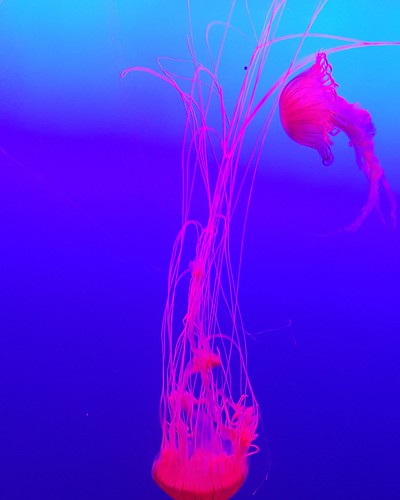In human products has led to accumulation in the environment with concentrations of 20?133,000 mg/kg dry-weight in biosolids from wastewater treatment plants. Very low concentrations, in the ng/l range, have been found in lakes, rivers, seawater and drinking water. Toxicological studies indicate that triclosan is not toxic for mammals, however, triclosan has an estimated bioaccumulation factor of more than 1000 in algae and can be highly toxic to green 18325633 algae. [4?] It has been wondered whether the extensive use of triclosan could select for antimicrobial resistance. For staphylococci onlylow-level triclosan resistance, tolerance, has been detected and the few exposure studies that have been conducted, have not shown any dependency between triclosan usage and increased tolerance towards triclosan or co/cross-resistance to antibiotics [7?0]. A confounder for exposure studies is the AN-3199 omnipresence of triclosan in the environment, which affects both the user groups and the controls [7]. In vitro studies have shown that bacteria can be stably adapted to increasing concentrations of triclosan and in some cases develop cross-resistance towards antibiotics. This has mostly been found for Gram-negative rods, caused by multidrug efflux pumps [11?4]. Staphylococcus epidermidis is an abundant human skin commensal as well as an important opportunistic pathogen responsible for a significant number of severe foreign body related infections. S. epidermidis isolated from blood cultures span the clinical spectrum from skin contaminants to severe infections [15]. S. epidermidis are exposed to triclosan through personal care products and the incidence of triclosan tolerance have been found to be higher in clinical S. epidermidis than in clinical Staphylococcus aureus isolates and it is speculated if the mechanisms are similar [16]. In S. aureus the mechanism for tolerance has been recognized as mutations in or increased expression of the gene fabI. The FabI enzyme, enoyl-acylTriclosan Resistance in Staphylococcus epidermidiscarrier protein reductase, catalyses the final step in bacterial type II fatty acid biosynthesis. Triclosan functions as a slow binding inhibitor that inactivates the enzyme through the GSK -3203591 custom synthesis formation of a stable, non-covalent, FabI-NAD+2triclosan ternary complex. [17] In this study we describe, for the first time, the susceptibility towards triclosan in S. epidermidis that have never been exposed to triclosan, namely S. epidermidis isolated from blood in 1965?6, well before the introduction of triclosan to the market. We compare these old 1516647 isolates with current isolates of S. epidermidis. The old S. epidermidis were exposed to triclosan, leading to development of tolerance to triclosan. The fabI gene and its expression was characterized in laboratory developed  triclosan tolerant S. epidermidis and current triclosan tolerant S. epidermidis.growth in the highest used dilution of 96 ethanol (0.77 ) was also tested and did not differ visually from growth in MHB alone.
triclosan tolerant S. epidermidis and current triclosan tolerant S. epidermidis.growth in the highest used dilution of 96 ethanol (0.77 ) was also tested and did not differ visually from growth in MHB alone.  10 ml from each well (0.0625 mg/l and above) was, after 24 hours incubation spotted on to Muller-Hinton agar (MHA) plates containing no triclosan. The MBC was read as the lowest concentration with no growth after 48 hours. All MIC experiments were repeated on two separate occasions each with two technical replicates and MIC is given as the mean. The MBC was repeated for all isolates with a high MBC defined as 8 mg/l and for one third of the rest (below 8 mg/l). All of the repeat MBCs.In human products has led to accumulation in the environment with concentrations of 20?133,000 mg/kg dry-weight in biosolids from wastewater treatment plants. Very low concentrations, in the ng/l range, have been found in lakes, rivers, seawater and drinking water. Toxicological studies indicate that triclosan is not toxic for mammals, however, triclosan has an estimated bioaccumulation factor of more than 1000 in algae and can be highly toxic to green 18325633 algae. [4?] It has been wondered whether the extensive use of triclosan could select for antimicrobial resistance. For staphylococci onlylow-level triclosan resistance, tolerance, has been detected and the few exposure studies that have been conducted, have not shown any dependency between triclosan usage and increased tolerance towards triclosan or co/cross-resistance to antibiotics [7?0]. A confounder for exposure studies is the omnipresence of triclosan in the environment, which affects both the user groups and the controls [7]. In vitro studies have shown that bacteria can be stably adapted to increasing concentrations of triclosan and in some cases develop cross-resistance towards antibiotics. This has mostly been found for Gram-negative rods, caused by multidrug efflux pumps [11?4]. Staphylococcus epidermidis is an abundant human skin commensal as well as an important opportunistic pathogen responsible for a significant number of severe foreign body related infections. S. epidermidis isolated from blood cultures span the clinical spectrum from skin contaminants to severe infections [15]. S. epidermidis are exposed to triclosan through personal care products and the incidence of triclosan tolerance have been found to be higher in clinical S. epidermidis than in clinical Staphylococcus aureus isolates and it is speculated if the mechanisms are similar [16]. In S. aureus the mechanism for tolerance has been recognized as mutations in or increased expression of the gene fabI. The FabI enzyme, enoyl-acylTriclosan Resistance in Staphylococcus epidermidiscarrier protein reductase, catalyses the final step in bacterial type II fatty acid biosynthesis. Triclosan functions as a slow binding inhibitor that inactivates the enzyme through the formation of a stable, non-covalent, FabI-NAD+2triclosan ternary complex. [17] In this study we describe, for the first time, the susceptibility towards triclosan in S. epidermidis that have never been exposed to triclosan, namely S. epidermidis isolated from blood in 1965?6, well before the introduction of triclosan to the market. We compare these old 1516647 isolates with current isolates of S. epidermidis. The old S. epidermidis were exposed to triclosan, leading to development of tolerance to triclosan. The fabI gene and its expression was characterized in laboratory developed triclosan tolerant S. epidermidis and current triclosan tolerant S. epidermidis.growth in the highest used dilution of 96 ethanol (0.77 ) was also tested and did not differ visually from growth in MHB alone. 10 ml from each well (0.0625 mg/l and above) was, after 24 hours incubation spotted on to Muller-Hinton agar (MHA) plates containing no triclosan. The MBC was read as the lowest concentration with no growth after 48 hours. All MIC experiments were repeated on two separate occasions each with two technical replicates and MIC is given as the mean. The MBC was repeated for all isolates with a high MBC defined as 8 mg/l and for one third of the rest (below 8 mg/l). All of the repeat MBCs.
10 ml from each well (0.0625 mg/l and above) was, after 24 hours incubation spotted on to Muller-Hinton agar (MHA) plates containing no triclosan. The MBC was read as the lowest concentration with no growth after 48 hours. All MIC experiments were repeated on two separate occasions each with two technical replicates and MIC is given as the mean. The MBC was repeated for all isolates with a high MBC defined as 8 mg/l and for one third of the rest (below 8 mg/l). All of the repeat MBCs.In human products has led to accumulation in the environment with concentrations of 20?133,000 mg/kg dry-weight in biosolids from wastewater treatment plants. Very low concentrations, in the ng/l range, have been found in lakes, rivers, seawater and drinking water. Toxicological studies indicate that triclosan is not toxic for mammals, however, triclosan has an estimated bioaccumulation factor of more than 1000 in algae and can be highly toxic to green 18325633 algae. [4?] It has been wondered whether the extensive use of triclosan could select for antimicrobial resistance. For staphylococci onlylow-level triclosan resistance, tolerance, has been detected and the few exposure studies that have been conducted, have not shown any dependency between triclosan usage and increased tolerance towards triclosan or co/cross-resistance to antibiotics [7?0]. A confounder for exposure studies is the omnipresence of triclosan in the environment, which affects both the user groups and the controls [7]. In vitro studies have shown that bacteria can be stably adapted to increasing concentrations of triclosan and in some cases develop cross-resistance towards antibiotics. This has mostly been found for Gram-negative rods, caused by multidrug efflux pumps [11?4]. Staphylococcus epidermidis is an abundant human skin commensal as well as an important opportunistic pathogen responsible for a significant number of severe foreign body related infections. S. epidermidis isolated from blood cultures span the clinical spectrum from skin contaminants to severe infections [15]. S. epidermidis are exposed to triclosan through personal care products and the incidence of triclosan tolerance have been found to be higher in clinical S. epidermidis than in clinical Staphylococcus aureus isolates and it is speculated if the mechanisms are similar [16]. In S. aureus the mechanism for tolerance has been recognized as mutations in or increased expression of the gene fabI. The FabI enzyme, enoyl-acylTriclosan Resistance in Staphylococcus epidermidiscarrier protein reductase, catalyses the final step in bacterial type II fatty acid biosynthesis. Triclosan functions as a slow binding inhibitor that inactivates the enzyme through the formation of a stable, non-covalent, FabI-NAD+2triclosan ternary complex. [17] In this study we describe, for the first time, the susceptibility towards triclosan in S. epidermidis that have never been exposed to triclosan, namely S. epidermidis isolated from blood in 1965?6, well before the introduction of triclosan to the market. We compare these old 1516647 isolates with current isolates of S. epidermidis. The old S. epidermidis were exposed to triclosan, leading to development of tolerance to triclosan. The fabI gene and its expression was characterized in laboratory developed triclosan tolerant S. epidermidis and current triclosan tolerant S. epidermidis.growth in the highest used dilution of 96 ethanol (0.77 ) was also tested and did not differ visually from growth in MHB alone. 10 ml from each well (0.0625 mg/l and above) was, after 24 hours incubation spotted on to Muller-Hinton agar (MHA) plates containing no triclosan. The MBC was read as the lowest concentration with no growth after 48 hours. All MIC experiments were repeated on two separate occasions each with two technical replicates and MIC is given as the mean. The MBC was repeated for all isolates with a high MBC defined as 8 mg/l and for one third of the rest (below 8 mg/l). All of the repeat MBCs.
